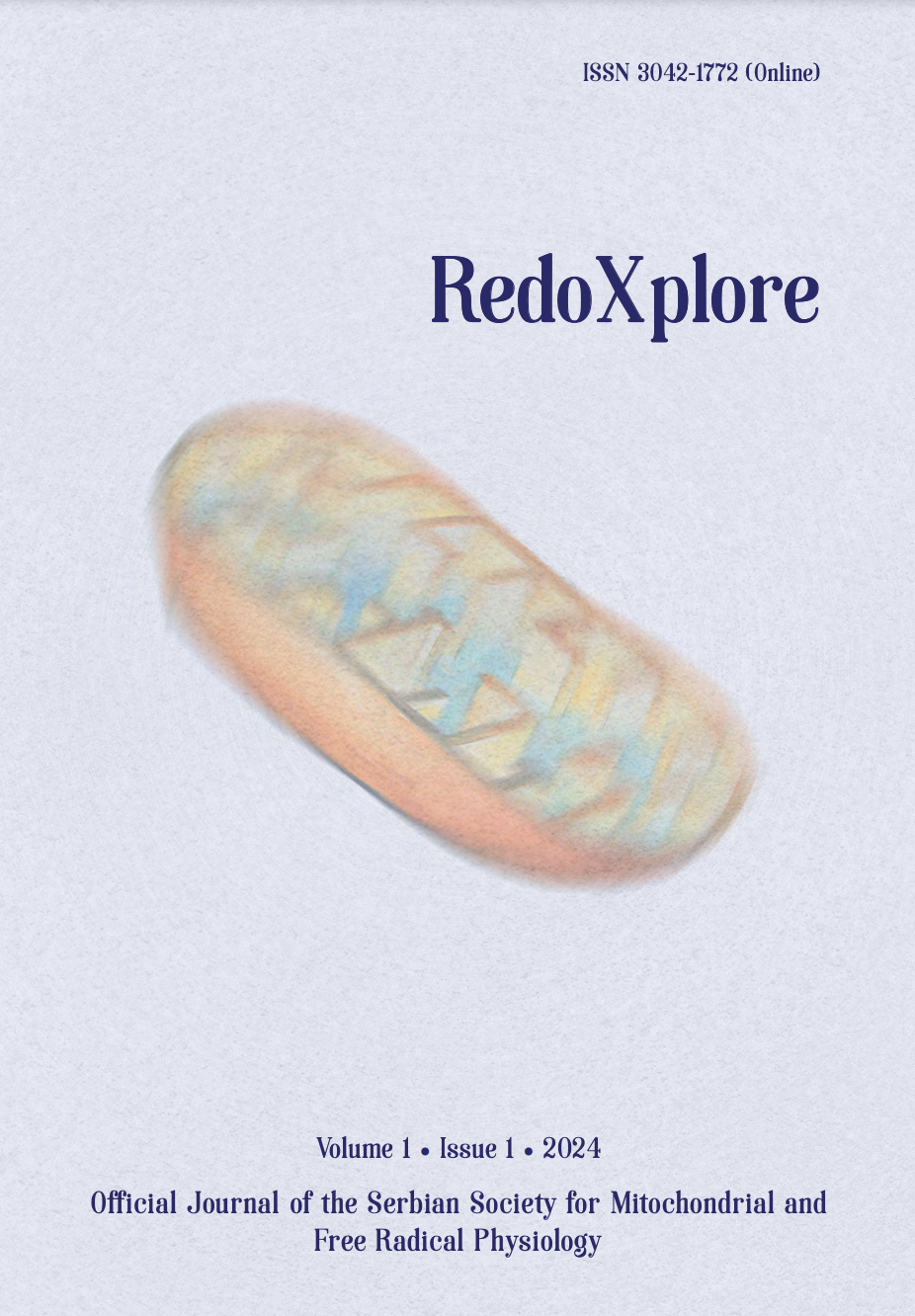
More articles from Volume 1, Issue 1, 2024
REDOX AND METABOLIC REPROGRAMMING OF BREAST CANCER CELLS AND ASSOCIATED ADIPOSE TISSUE - THE CORNERSTONES OF ADAPTIVE TUMOUR BEHAVIOUR
INSULIN MODULATES MITOCHONDRIAL STRUCTURAL AND FUNCTIONAL MOSAICISM IN BROWN ADIPOCYTES
NITRITE MITIGATES OXIDATIVE BURST IN ISCHEMIA/REPERFUSION IN BRAIN SLICES
NITRIC OXIDE, SUPEROXIDE AND PEROXYNITRITE – REDOX REGULATION OF THE CARDIOVASCULAR SYSTEM BY NITRO-OXIDATIVE STRESS AND S-NITROS(YL)ATION
DIETARY NITRATE AS PIVOT ON THE GUT MICROBIOTA-HOST REDOX COMMUNICATION
PROGNOSTIC POTENTIAL OF LEUKOCYTE TELOMERE LENGTH AND PARAOXONASE 1 ACTIVITY IN SMALL CELL LUNG CANCER
Department for Medical Biochemistry, Faculty of Pharmacy, University of Belgrade , Belgrade , Serbia
Internal Medicine Clinic “Akta Medica” , Belgrade , Serbia
Merck Sharp & Dohme d.o.o., Medical Affairs , Belgrade , Serbia
Faculty of Medicine, University of Belgrade , Belgrade , Serbia
Clinic for Pulmonology, University Clinical Center of Serbia , Belgrade , Serbia
Clinic for Pulmonology, University Clinical Center of Serbia , Belgrade , Serbia
Department of Clinical Biochemistry, Faculty of Pharmacy, University of Ljubljana , Ljubljana , Slovenia
Department of Clinical Biochemistry, Faculty of Pharmacy,, University of Ljubljana , Ljubljana , Slovenia
Department for Medical Biochemistry, Faculty of Pharmacy, University of Belgrade , Belgrade , Serbia
Department for Medical Biochemistry, Faculty of Pharmacy, University of Belgrade , Belgrade , Serbia
Editor: Bato Korac
Published: 29.08.2024.
Short oral presentations
Volume 1, Issue 1 (2024)
Abstract
Small cell lung cancer (SCLC) is the leading cause of cancer-related deaths worldwide and is characterized by rapid growth, early metastasis, and high mortality rates. This study investigated the prognostic potential of leukocyte telomere length (LTL) and paraoxonase 1 (PON1) activity in 60 SCLC patients treated with a cisplatin/etoposide (PE) regimen. Patients were observed at baseline, after 2 cycles, and after 4 cycles of chemotherapy. The primary objective was to evaluate the prognostic potential of these biomarkers for patient survival. LTL was measured from isolated genomic DNA using real-time quantitative polymerase chain reaction (RTq-PCR), while PON1 activity was determined using a spectrophotometric method. A Kaplan-Meier survival analysis was performed with cut-off values below the 25th percentile for LTL and PON1 activity to determine their prognostic power for overall survival. The analysis revealed that both LTL and PON1 are significant predictors of patient survival, suggesting that patients with levels below the 25th percentile have a higher risk of death (Log Rank = 3.956, p = 0.047; Log Rank = 3.834, p = 0.050, respectively). Telomeres, the protective caps at the ends of chromosomes, shorten with each cell division and reflect cell aging and genomic stability. Shorter telomere lengths in leukocytes have been associated with a poorer prognosis and lower survival rates in SCLC patients. Similarly, reduced PON1 activity is associated with increased oxidative stress, which contributes to cancer progression and poorer clinical outcomes. Monitoring PON1 activity could help in assessing patient prognosis and adjusting treatment strategies. These findings suggest that LTL and PON1 activity have significant prognostic value in SCLC and serve as useful indicators for identifying high-risk patients and guiding treatment decisions to improve outcomes.
Citation
Copyright

This work is licensed under a Creative Commons Attribution-NonCommercial-ShareAlike 4.0 International License.
Article metrics
The statements, opinions and data contained in the journal are solely those of the individual authors and contributors and not of the publisher and the editor(s). We stay neutral with regard to jurisdictional claims in published maps and institutional affiliations.






